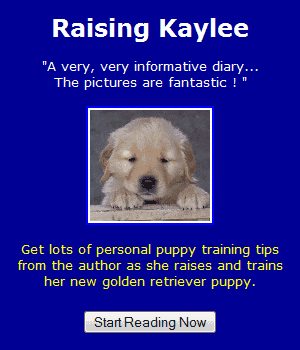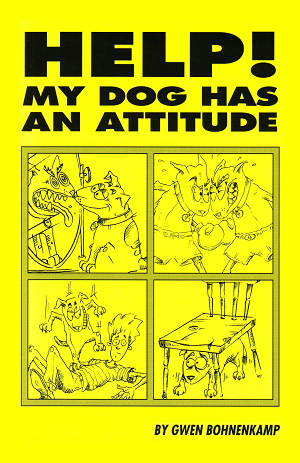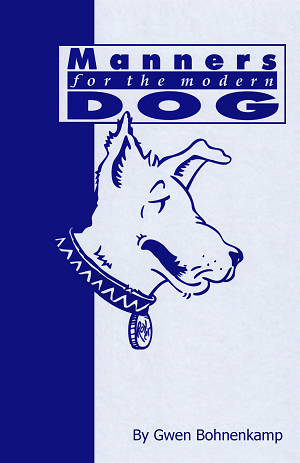Training a Puppy to Accept His Collar and Leash & Climb Stairs

Training Puppy to Accept a Collar
Young pups are often bewildered or unsure of themselves and their newly acquired leash and collar. Some pups just don't like the collar! It usually takes only a few hours for a pup or even an adult dog to adjust to a collar though. Choose a collar that fits comfortably but securely. Choke collars are a training aid and should never be used as a substitute for a regular buckle type collar. The collar should have an identification tag and license attached.
Simply put the collar on the puppy and let him jump, squirm, roll and paw at it if he wishes. Don't encourage the behavior by laughing or trying to soothe him. Do not reprimand him either. It's best to just ignore him and let him get used to it or provide some distraction to get his mind off the collar. Play, training and eating work well to get the pup's mind off the collar. Once the puppy accepts it, he won't even know it's there. It's similar to a person getting used to wearing a ring or watch for the first time.
Training Puppy to Accept a Leash
Once your pup accepts the collar, put his leash on and then just sit and watch. Obviously, do this indoors or in a secure confined area. Let puppy drag the leash around on his own but keep a close eye on him so that he doesn't tangle or get hurt. Leave it on for just a few minutes at first. Later, repeat the exercise for longer periods of time. Put your pup on leash during mealtimes, so he associates the leash with a pleasant event. If he is very fearful of the leash, you may want to put it next to the food bowl for a while before attaching it to his collar. Eventually he will see that no harm is coming and there indeed is nothing to be afraid of.
When you are sure he is completely comfortable walking around with the leash on, pick up the other end for a few minutes. Do not try walking him yet. Just hold onto the other end and let him lead you around. Try not to get into a position that will make him pull or strain on the leash or he will probably become afraid of it again. If he sits down, that is okay. You just sit down too. Try backing up and enticing him to come towards you. If he hesitates, don't pull or drag him by the leash. Try luring him over to you with a food treat or toy. When he starts to walk, praise him profusely so he knows how happy you are. Give him lots of time to get used to his leash and always try to make it a pleasant experience.
Give your pup lots of practice getting used to walking on leash in his own home, since it is a familiar environment with minimal distractions. When he is comfortable indoors, try going outdoors. Again, begin in an area with few distraction such as your front or back yard. When the two of you have mastered this, you are ready for places where there are more distractions. This exercise won't be difficult, since you've both had lots of practice beforehand at getting it right.
If your pup is biting and chewing the leash, try applying bitter apple, Tabasco or some other unpleasant tasting (but nontoxic) substance to the leash. Reapply before every outing.
Remember to always walk your puppy on-leash. A puppy off-leash is always in danger; accidents happen very quickly. Your puppy's safety as well as compliance with your local leash law, is your responsibility.
Training Puppy to Climb Stairs
If your puppy is afraid of stairs, or simply does not know how to climb them, then begin slowly to build her confidence. Start off at the bottom of a flight of steps. A wide, shallow stairway will probably be least frightening for your puppy. Go up one step; encourage and lure your puppy up with your voice, a food treat or a toy. When she is successful, give her lots of reward and praise. Then go back down that same step. Repeat only one step over and over until your puppy goes up and down with ease and courage. Wait a while, then try two steps. When your puppy feels secure going up and down two steps, then try three steps and so on. Never force your puppy to go up or down as this will only frighten her and slow the process. Always use praise and lures to get your puppy to go up or down a step. Don't rush her into doing more than she can, take things "one step at a time."
Training a Puppy to Accept His Collar and Leash & Climb Stairs
Recommend this webpage... share with friends !These articles may also be of interest...
^ Top of Page


